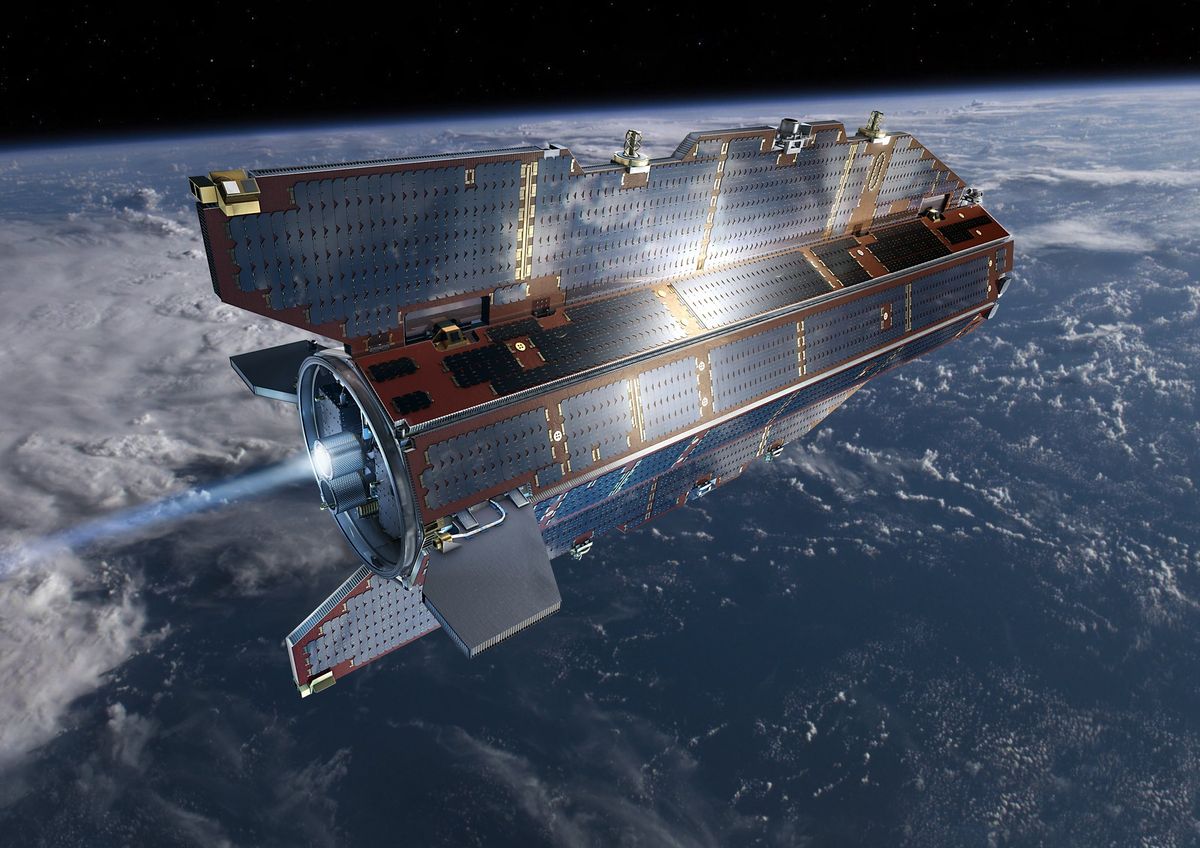The first commercial very low-Earth orbit (VLEO) satellite will probably launch before the end of December, depending on how things go at China Aerospace Science and Industry Corporation (CASIC) and EOI Space. Both companies claim they are leading the way on an over-the-horizon idea that will bring satellites more down-to-Earth than today’s fast-growing low Earth orbit (LEO) satellite constellation.
VLEO refers to orbits between about 100 kilometers and 300 or 400 km (although the exact range depends on who you ask), in contrast to LEO, which starts around 300 or 400 km and extends up to 2,000 km. The first satellites in VLEO were short-lived US spy satellites in the 1960s and 1970s, which dropped their film payloads for mid-air capture by aircraft. It’s probable that their descendants are still dipping into VLEO.
Outside of the world of espionage, the European Space Agency (ESA) operated a satellite in VLEO from 2009 to 2013, the Japanese Aerospace Exploration Agency’s (JAXA’s) Super-Low Altitude Test Satellite set a record for the lowest orbit in 2017, and the European Union flew a VLEO tech testbed for 9 months in 2021 and 2022. Not until now, however, have businesses bet that the future of satellites will include very low orbiters.
“We are convinced that this part of space will be very important in the near future, for scientific applications and also for commercial applications.”
—Stefanos Fasoulas, University of Stuttgart
“The telecoms industry is quite interested in VLEO, particularly for its low latency,” says Russell Hills, a space systems engineer at Thales Alenia Space in Bristol, in the United Kingdom. Hills was involved in a study that found advantages for telecoms satellites in orbits of about 250 km. “You need thousands of satellites, and several years ago that would have been ridiculous, but now that’s not the case,” he says. The same falling costs for production and launch that have enabled three years of record numbers of orbital launches make it feasible for companies to consider huge constellations of VLEO satellites.
VLEO satellites could allow scientists to make not just sharper measurements of the Earth, but also new kinds of measurements, such as mapping the makeup of the atmosphere at their altitude and how it changes over time. Telecoms companies will be able to shift some of their ground-based cellular and emerging LEO-based cellular infrastructure into VLEO. Additionally, VLEO has less harmful radiation than higher orbits, making it possible to use cheaper equipment, among other advantages.
All that very low orbiting fruit is getting attention from research agencies. The U.S. Defense Advance Research Projects Agency (DARPA) is offering to pay for research on VLEO satellites with “air-breathing” propulsion technologies, and in October the ESA requested new ideas for VLEO applications.
CASIC plans 300 such satellites by 2030, according to Space News. Keeping them in VLEO will require almost continuous thruster boosts, because atmospheric drag pulls satellites out of VLEO within six months to a year. Thales Alenia Space last year won an ESA contract to develop a VLEO satellite whose airplane-like shape might help them minimize drag from the wispy atmosphere at those altitudes. The project will also focus on a new propulsion technology for VLEO and materials that can withstand the corrosive effect of the atomic oxygen in VLEO, says Stephen Mellor, a project manager at Thales Alenia Space.
“We are convinced that this part of space will be very important in the near future, for scientific applications and also for commercial applications,” says space technologist Stefanos Fasoulas, of the University of Stuttgart, who is leading a 12-year multi-university research project on VLEO satellites. The collaboration includes almost two dozen lines of basic research. “Extending the lifetime is the overarching question,” Fasoulas says.
“You need thousands of satellites, and several years ago that would have been ridiculous, but now that’s not the case.”
—Russell Hills, Thales Alenia Space
Indeed, NASA and its partners chose to raise the orbit of the International Space Station (ISS) from around 350 km to 400 km because of the atmospheric drag and fuel costs of stabilizing its orbit. For future small satellites, the tradeoffs may be different: it will cost less to get them to VLEO, they will require less power to communicate with the surface, and when they reach the end of their useful life, they will burn up faster, which helps to minimize space junk and odds that a cascade of collisions could ripple outward, creating ever more debris and preventing safe access to space for decades, a problem called the Kessler syndrome.
Space companies aiming very low will have to harden their spacecraft against the atomic oxygen in VLEO and get better at predicting and handling the variable atmospheric drag, which varies from night to day in the same orbit, and varies on slower cycles due to solar radiation. One of the questions Fasoulas’ collaborators will study is how to counter this unpredictability. Other researchers in his network will investigate the possibility of capturing some of the atmosphere that slows down low-orbiting satellites and converting it into fuel to help keep those satellites aloft. At first, their research will take place on Earth’s surface, in wind tunnels and supercomputers and laboratories.
“One of the key questions is how can we extrapolate from ground experiments to real flight,” Fasoulas says. If CASIC and EOI Space succeed, companies and researchers may soon have their first answers.
This post was updated on 18 December to correct a source and add context to an ESA contract.
- Satellite Signal Jamming Reaches New Lows ›
- European Space Agency Targets Orbital Debris, Solar Storms - IEEE ... ›
- Your Cellphone Will Be a Satphone ›
- The LEO Satellite Industry Needs More Engineers - IEEE Spectrum ›
Lucas Laursen is a journalist covering global development by way of science and technology. An IEEE Spectrum Contributing Editor, he has lived in and reported from the United States, United Kingdom, Switzerland, Mexico and Spain.



